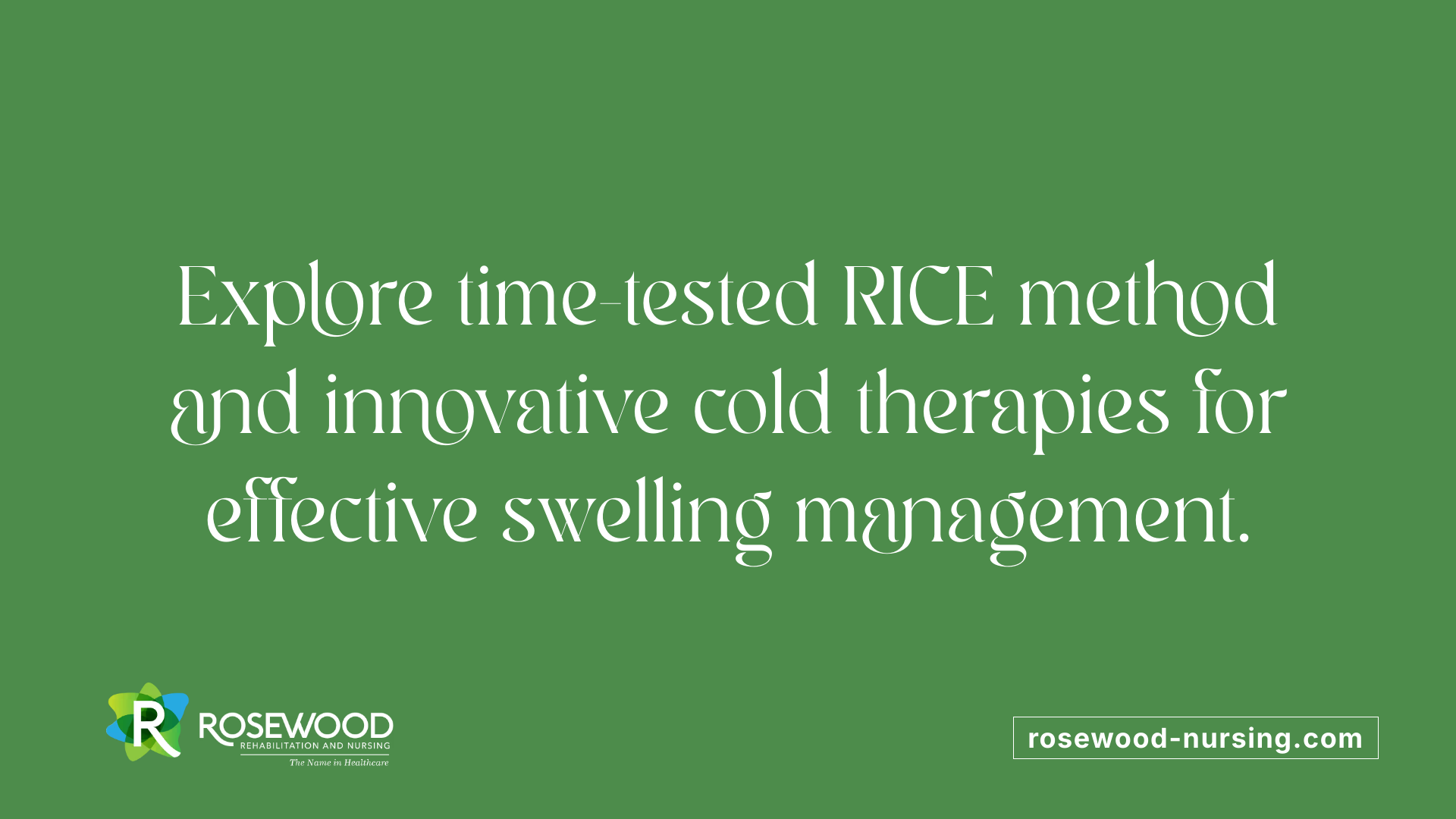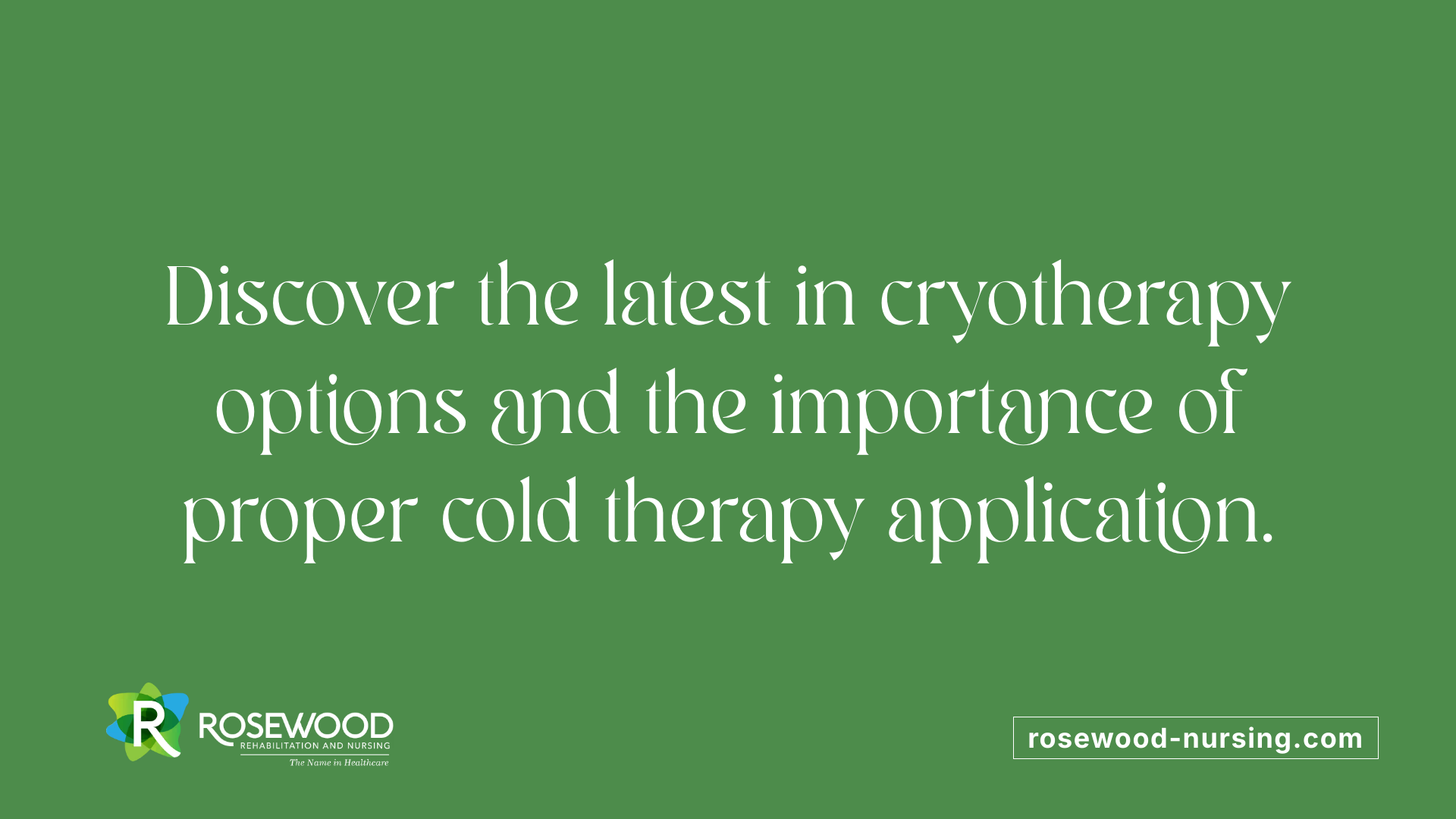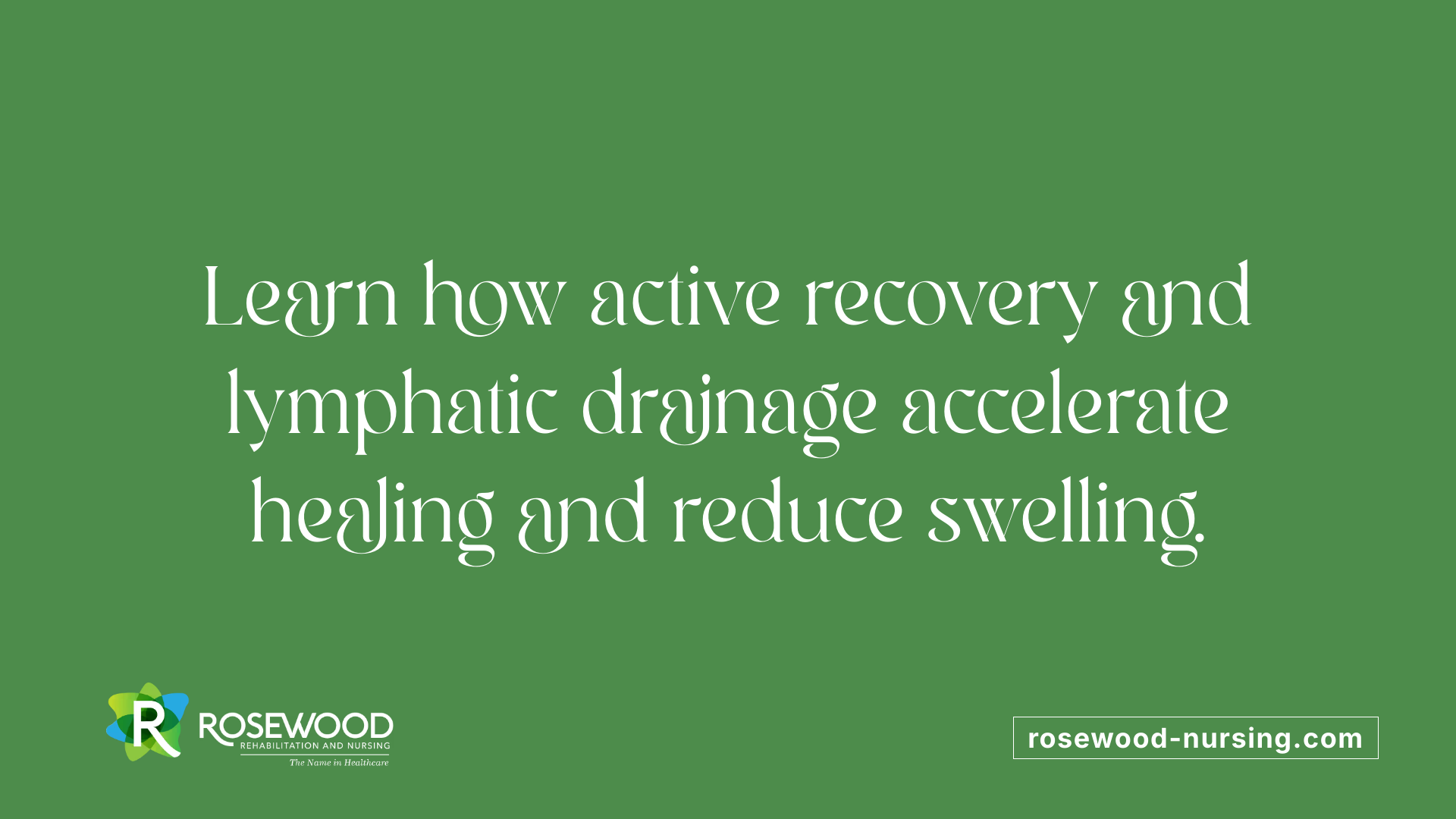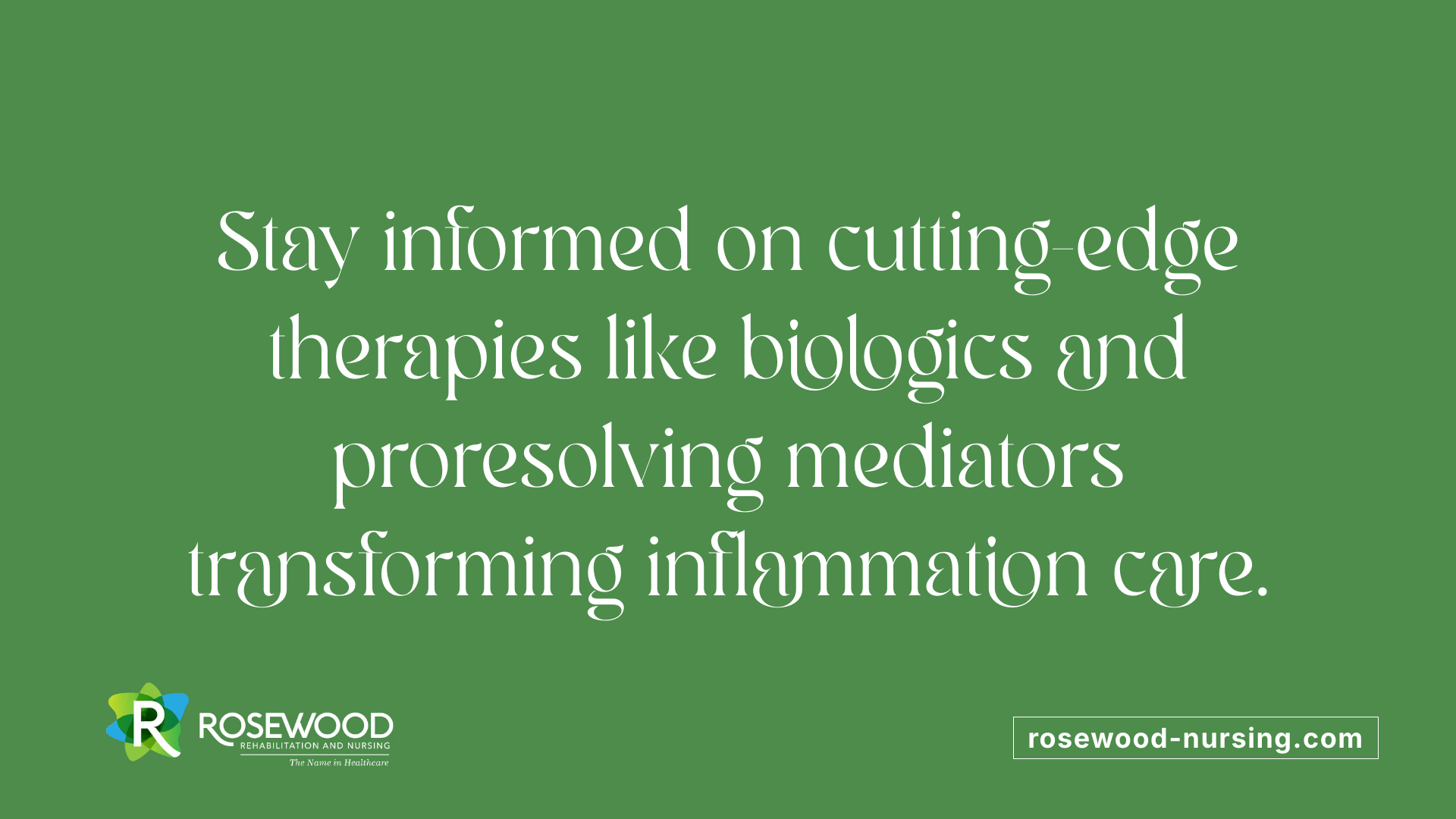Managing Swelling and Inflammation During Recovery
November 5, 2025
Effective Strategies for Managing Swelling and Inflammation in Recovery

Understanding the Fundamentals of Swelling and Inflammation
Swelling and inflammation are natural processes that occur during the body's healing response to injury, infection, or stress. While they are essential for tissue repair, excessive or prolonged swelling and inflammation can impede recovery and cause discomfort. Recognizing the mechanisms behind these processes and employing appropriate management techniques can optimize healing and prevent long-term complications.
The Biological Basis of Swelling and Inflammation
What is swelling and why does it occur?
Swelling, medically known as edema, is a common response of the body to injury or inflammation. It happens when fluids leak from blood vessels into surrounding tissues, causing the affected area to enlarge. This fluid buildup is part of the body’s natural healing process, helping to cushion and protect injured tissues while immune cells work to repair damage. However, excessive or prolonged swelling can lead to discomfort, joint stiffness, and longer recovery times.
Different types of swelling: edema, effusion, hemarthrosis
Swelling manifests in various forms depending on the injury site and nature. Edema refers to swelling outside the joint tissues caused by fluid accumulation in the interstitial space. Effusion occurs inside a joint capsule, involving the buildup of fluid within the joint, often due to inflammation or injury. Hemarthrosis is a specific form of swelling inside a joint that includes blood accumulation, typically from bleeding after trauma or surgery.
The body's inflammatory response roles
The inflammatory response is a vital part of healing. When tissues are injured, blood vessels dilate to bring immune cells, nutrients, and repair factors to the site. This results in redness, warmth, swelling, and pain—signs that the body is fighting infection or repairing tissue. Immune cells like neutrophils and macrophages clean up debris and assist tissue regeneration. Although necessary, inflammation must be carefully regulated; excessive inflammation can cause tissue damage and delay recovery.
Understanding these processes helps in managing swelling effectively by balancing protective inflammation with measures to reduce excessive accumulation and discomfort, such as elevation, compression, and appropriate medical intervention.
Differentiating Between Types and Duration of Swelling
How long does swelling typically last after an injury?
Swelling generally peaks within the first 48 to 72 hours after an injury. For minor injuries like sprains or bruises, swelling may start to reduce within a week as the body's healing process progresses. However, more serious injuries, such as fractures or severe soft tissue damage, can cause swelling that persists for several weeks or even months.
If swelling remains long after the initial injury or worsens over time, it may indicate complications like ongoing inflammation or infection. It’s advisable to consult a healthcare professional if swelling continues beyond three weeks or is associated with other concerning symptoms.
What symptoms indicate a need to seek medical help?
Certain signs suggest that swelling could be a complication requiring medical attention. These include severe or worsening pain, increasing redness, warmth, or fever, and loss of function or mobility in the affected area.
Additionally, swelling that does not improve within a few weeks despite home care, or swelling accompanied by systemic symptoms like fever or chills, should prompt a medical evaluation. These episodes could signal infection or other underlying issues needing prompt treatment.
More info on problematic swelling
For further understanding of when swelling becomes problematic, searching for "duration and signs of problematic swelling" can provide detailed insights into symptoms that warrant medical intervention and potential underlying causes beyond simple injury recovery.
Managing Swelling: Traditional and Modern Approaches

What is the RICE method and how does it help?
The RICE approach—Rest, Ice, Compression, and Elevation—is a widely recommended initial treatment for acute injuries. This method helps control swelling, reduce pain, and prevent further tissue damage. Rest allows the injured tissues to begin healing without stress. Applying ice causes blood vessels to constrict, reducing blood flow to the area, which minimizes swelling and numbs painful nerve endings. Compression, often through bandages or specialized devices, limits fluid accumulation by applying controlled pressure, while elevation—raising the injured limb above heart level—encourages fluids to drain away from the injury site via gravity. Together, these steps help manage inflammation and facilitate quicker recovery.
How does cold therapy reduce swelling and pain?
Cold therapy works by causing vasoconstriction, the narrowing of blood vessels, which decreases blood flow to the injured tissues. This action reduces the leakage of fluids that cause swelling and also limits the infiltration of immune cells that promote inflammation. Additionally, cold numbs nerve endings, providing pain relief. Applying ice or cold packs for 10 to 20 minutes several times a day helps control swelling and easing discomfort. It’s important to avoid direct contact with skin and not to overuse cold therapy, as prolonged application may delay healing or cause tissue damage. Proper timing and duration are key to maximizing benefits while preventing adverse effects.
Advances and Considerations in Cold Therapy

Are there newer treatment options for managing swelling and inflammation?
Traditional ice packs have long been used to reduce pain and swelling following injuries. However, recent developments have introduced innovative approaches like hyperbaric gaseous cryotherapy. This treatment, also known as neurocryostimulation, rapidly cools the skin using sprays of supercooled CO2 delivered under high pressure. The method causes a systemic vasoconstriction followed by vasodilation, which may promote faster pain relief and anti-inflammatory effects.
While some preliminary studies suggest that hyperbaric gaseous cryotherapy can reach lower skin temperatures more quickly than conventional ice and might offer enhanced therapeutic benefits, the evidence remains mixed. Some research shows promising results, but more high-quality trials are needed to confirm its efficacy. Meanwhile, traditional ice therapy continues to be widely used because of its simplicity and established short-term benefits.
Recent research on cold therapy's efficacy
Recent scientific reviews reveal a shift in understanding about the role of cold therapy. Studies demonstrate that while cold application can temporarily numb tissues and reduce immediate pain, its long-term impact on healing is less certain.
In fact, some evidence indicates that prolonged or excessive cold therapy could delay tissue repair by constricting blood vessels and slowing the immune response vital for healing. A well-cited study from the Journal of Sports Medicine found that icing injuries within the first 30 minutes could reduce inflammation by up to 40%, but overuse or extended application might impede muscle regeneration and increase scarring.
Current injury management guidelines now emphasize balancing immediate pain relief with active recovery strategies, suggesting that cold therapy should be used judiciously and within recommended durations.
Potential drawbacks of cold application
While cold therapy provides effective short-term relief, overapplication poses risks. Extended use may cause tissue damage, frostbite, or increased ischemia—an inadequate blood supply—delaying healing and increasing the chance of further injury.
Another concern is that cold-induced vasoconstriction diminishes blood flow necessary for delivering nutrients and immune cells to injured tissues. This could hinder the natural inflammatory process, which is crucial during the early phases of healing.
Thus, cold therapy should be applied for limited periods, typically 15–20 minutes every hour or as recommended, to maximize benefits and minimize harm. Proper timing and duration are essential to ensuring that cold therapy supports, rather than impedes, recovery.
| Aspect | Traditional Ice | Hyperbaric Gaseous Cryotherapy | Notes |
|---|---|---|---|
| Application | Ice packs, cold compresses | Supercooled CO2 spray | Newer, rapid cooling method |
| Effectiveness | Short-term pain and swelling relief | Potential for enhanced anti-inflammatory effects | Evidence still emerging |
| Risks | Tissue damage, delayed healing | Similar risks, possible less frequent with controlled use | Proper application necessary |
| Research | Well-established | Promising but inconclusive | More studies needed |
In summary, advancements like hyperbaric gaseous cryotherapy offer exciting possibilities, but traditional ice remains a reliable and effective option for managing acute swelling when used properly. Medical providers should consider individual cases, balancing benefits against potential drawbacks, and stay informed through ongoing research.
The Role of Movement and Physical Therapy in Swelling Reduction

What strategies beyond cold therapy assist in reducing swelling?
Active recovery plays a crucial role in managing swelling after injury. Techniques such as gentle movement, physical therapy exercises, and manual lymphatic drainage stimulate the lymphatic system, which is responsible for removing excess fluids from tissues. Encouraging blood flow through controlled activity ensures that fluids do not stagnate, which can lead to prolonged swelling.
Physiotherapists often recommend light exercises like ankle pumps, shoulder rolls, or gentle stretching to maintain circulation without causing further harm. These movements help activate the lymphatic and circulatory systems, expediting fluid drainage and healing.
Manual lymphatic drainage (MLD), a specialized form of massage, is also effective. It encourages the movement of lymphatic fluid toward lymph nodes, reducing swelling and promoting tissue recovery. Combining these techniques with proper exercise creates a comprehensive approach to swelling management.
When is it safe to resume activity, and why?
Resuming activity should only occur once the swelling has considerably decreased, and pain levels are manageable. Starting too early can reopen wounds, increase swelling, or cause additional tissue damage. It is essential to allow the body sufficient time for initial healing, as premature movement risks aggravating the injury.
Gradually returning to activity once the initial phase of healing is complete helps restore normal function and prevents long-term complications like joint stiffness or muscle atrophy. Healthcare providers recommend a phased approach: beginning with gentle, low-impact movements and progressing as tolerated. This strategy minimizes the risk of setbacks and supports optimal recovery.
Dietary and Lifestyle Strategies to Combat Chronic Inflammation
What lifestyle and dietary changes help reduce chronic inflammation?
Managing chronic inflammation involves a combination of dietary choices and lifestyle modifications. Adopting a diet that emphasizes nutrient-rich, anti-inflammatory foods can make a significant difference. Regular physical activity, stress management techniques such as meditation or yoga, maintaining adequate sleep, and avoiding harmful habits like smoking and excessive alcohol consumption further contribute to reducing systemic inflammation.
Consistent lifestyle habits focused on healthful eating and staying active help modulate the immune response, decrease the production of inflammatory chemicals, and support overall metabolic health. These changes not only help in lowering inflammation but also reduce the risk of long-term chronic diseases such as heart disease, diabetes, and autoimmune disorders.
Recognizing When Medical Intervention Is Necessary

When should I seek professional medical help during recovery?
Medical help should be sought promptly if swelling worsens over time, lasts longer than 2-3 weeks, or if you experience severe pain, redness, warmth, fever, or signs of infection such as pus or spreading redness. Sudden worsening of symptoms or signs of systemic illness like chills or fatigue also require immediate medical attention. Early intervention can prevent complications and promote proper healing.
How can untreated inflammation impact recovery?
Untreated or chronic inflammation can cause ongoing tissue damage, joint stiffness, and the development of fibrosis or scar tissue. Over time, it can weaken tissues, making them more susceptible to further injury or infections. Persistent inflammation may also interfere with the healing process, leading to prolonged pain, limited function, and increased risk of long-term disability.
Preventing complications
Monitoring swelling and inflammation closely helps identify when professional treatment is needed. Techniques such as elevation, compression, and appropriate medication can manage early symptoms. Recognizing serious signs early ensures timely care, reduces risk of complications, and supports a faster, more complete recovery.
| Indicator | What to Watch For | Why It Matters |
|---|---|---|
| Duration of swelling | Longer than 2-3 weeks | Possible chronic inflammation needing medical assessment |
| Severity of pain | Worsening or unrelieved pain | Sign of tissue damage or infection |
| Changes in skin | Redness, warmth, pus | Indicators of infection or severe inflammation |
| Additional symptoms | Fever, chills | Systemic response requiring urgent care |
Timely medical intervention is crucial to prevent long-term damage and ensure proper healing, especially when symptoms escalate or fail to improve with home care techniques.
Emerging Treatments and Future Directions
 Recent advances in managing inflammation focus on targeted therapies that aim to modulate the body’s immune response with precision. Biologic agents, such as monoclonal antibodies targeting specific inflammatory cytokines like IL-1β and IL-6, are increasingly being used for autoimmune conditions, helping to reduce inflammation without broadly suppressing the immune system.
Recent advances in managing inflammation focus on targeted therapies that aim to modulate the body’s immune response with precision. Biologic agents, such as monoclonal antibodies targeting specific inflammatory cytokines like IL-1β and IL-6, are increasingly being used for autoimmune conditions, helping to reduce inflammation without broadly suppressing the immune system.
In addition to biologics, researchers are exploring therapies that promote the natural resolution of inflammation. Specialized proresolving mediators (SPMs), including resolvins, protectins, and maresins, are bioactive lipids derived from omega-3 fatty acids. These compounds help accelerate the termination of inflammation and facilitate tissue healing, potentially reducing chronic inflammation and its related diseases.
Looking ahead, several innovative treatments are under investigation. Inflammasome inhibitors seek to block the activation of inflammatory complexes involved in chronic inflammatory processes. Modular pathways that influence the resolution phase of inflammation are also being studied to develop drugs that actively promote healing and tissue recovery.
Furthermore, personalized medicine approaches utilizing inflammation biomarkers are gaining ground. By measuring specific markers such as C-reactive protein (CRP) or interleukin levels, clinicians may tailor treatments to an individual's unique inflammatory profile, enhancing effectiveness and reducing side effects.
These ongoing research efforts aim to provide safer, more precise, and more effective management options for inflammation-related conditions, potentially transforming recovery protocols in both sports medicine and general healthcare.
| Approach | Focus Area | Example Treatments | Future Potential |
|---|---|---|---|
| Targeted biologics | Cytokine inhibition | Anti-IL-1β, Anti-IL-6 | Autoimmune, inflammatory diseases |
| Resolution-enhancing | Promoting natural healing | Resolvins, protectins, maresins | Chronic inflammation management |
| Inflammasome inhibitors | Blocking inflammatory complex activation | NLRP3 inhibitors | Reducing chronic inflammatory states |
| Biomarker-guided therapies | Individualized treatment planning | CRP, cytokine level testing | Personalized medicine |
Staying informed about these promising therapies—searching
Balancing Inflammation Control and Active Recovery
While managing swelling and inflammation is crucial for healing, overly suppressing these processes can delay recovery. Combining evidence-based methods like cold therapy, proper movement, dietary adjustments, and professional guidance ensures an optimal balance that fosters tissue repair and minimizes discomfort. Remaining vigilant for signs that require medical attention helps prevent complications, ensuring a smooth and effective recovery process.
References
- Swelling: The Body's Reaction to Injury
- 5 Ways to Reduce Swelling from an Injury - Game Ready blog
- What Is Inflammation? Types, Causes & Treatment - Cleveland Clinic
- Guide to Managing Pain and Inflammation - NICE Recovery Systems
- Muscle damage and inflammation during recovery from exercise
- Is it time to put traditional cold therapy in rehabilitation of soft-tissue ...
- How to Manage Edema After Surgery - Tactile Medical
- Edema - Diagnosis and treatment - Mayo Clinic
Similar articles

Short-Term Rehab For Elderly Near Me

How Can I Help An Elderly Person?

How Nursing Homes Protect Residents During Natural Disasters

The Importance of Regular Health Assessments in Long-Term Care Facilities

The Importance of Breathing Exercises in Recovery

How Medical Services Support Residents with Chronic Conditions
Contact us today and experience ”The Name in Healthcare”
Where compassion, well-being, and a welcoming community converge to redefine your healthcare journey. Welcome to Rosewood, where your family becomes our family.














